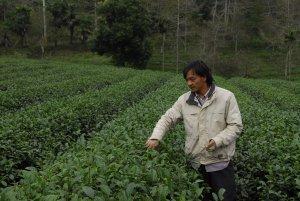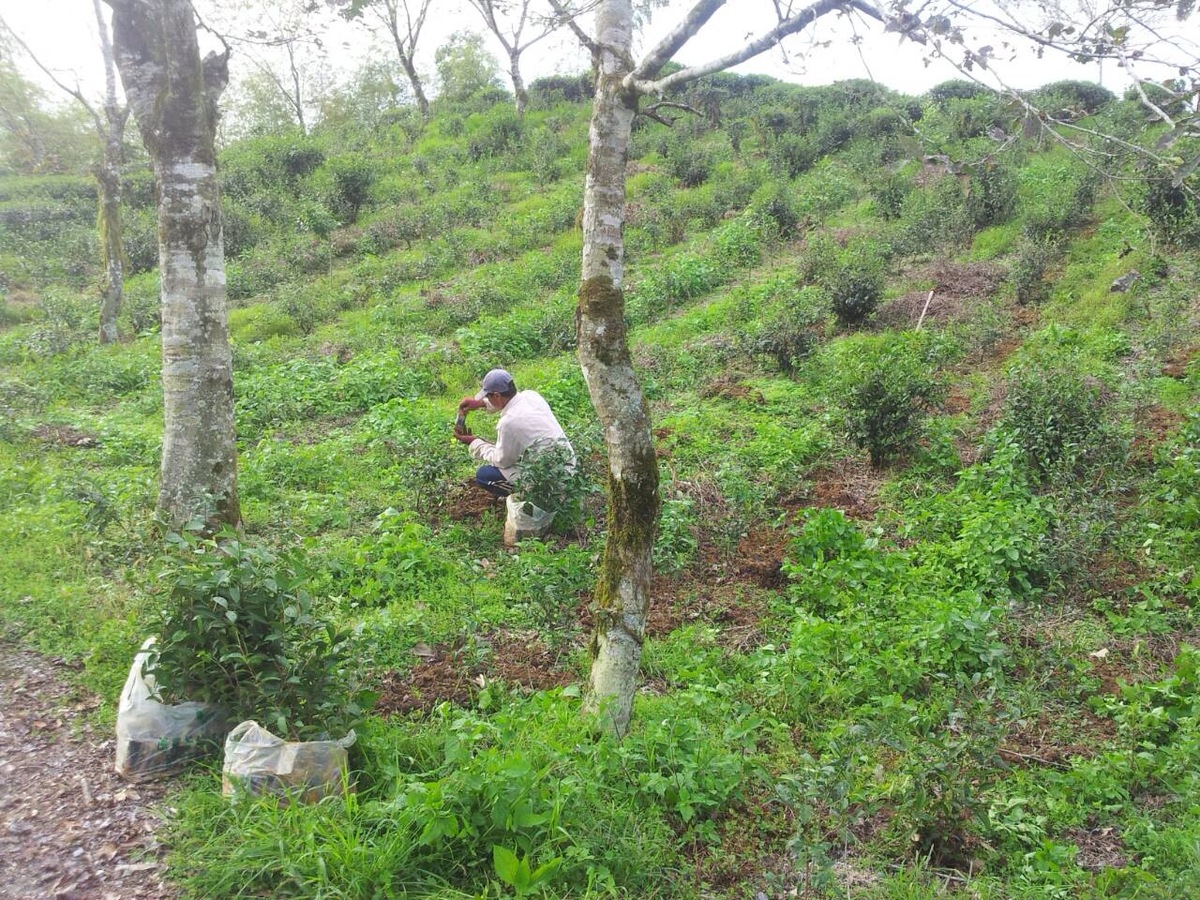六十石山茶園
六十石山茶園のストーリー
六十石は花蓮県富里郷竹田村東側の海拔約800メートルの海岸山脈上にあります。ここには300ヘクタールにおよぶ金針花畑が広がっており、赤柯山と並び花蓮県内の二大金針花栽培地となっています。六十石山という地名の由来ですが、地元の人によると、日本統治時代初期、農作では一甲あたり約4,50石の収穫というのが一般的でしたが、この一帯では一甲あたり約60石が収穫できたそうです。それで「六十石山」と呼ばれるようになったということです。もうひとつの言い伝えでは、日本統治時代初期、この山一帯はクスノキが生い茂っていましたが、樟脳を製造するため、伐採されてしまい、その結果、はげ山に60個の巨石が発見されたということです。そこで「六十石山」と名付けられたと言われています。
省道台9号線、六十石山産業道路を経て、山道を進んでいくと、六十石山の金針花畑へと到着します。山頂に広がる金針花畑はまるでオレンジ色の絨毯を敷き詰めたかのようです。緑いっぱいの山中には赤瓦の農家の小屋もいくつか並び、辺りは牧歌的な雰囲気に包まれています。
ここ数年、花東縱谷国家風景区管理処では六十石山に十軒の涼み台を設けました。これはひとつひとつ異なる形をしており、鹿剣、観親、尖閣、黄花、鹿葱、山嵐、忘憂、萱草、丹棘および療愁など、金針花の別名や詩的な名前が付けられています。これら涼み台に立つと、山からはさわやかな風が吹きつけ、山谷を自由に飛ぶ鳥になった気分となります。しかも、それぞれの涼み台からの風景は異なります。海岸山脈を眺められるところもあれば、金針花畑の壮観な眺めや峡谷に広がる田園風景などが眺められるところもあります。さらに夜には満点の星空となり、黒いシルクの上にダイヤモンドが輝いているかのような美しさとなります。
毎年8月~9月の金針花シーズンには、大勢の人々が六十石山を訪れ、細い産業道路は行楽客で溢れかえります。実際はシーズン以外の季節に訪れても魅力はいっぱいです。とりわけ冬には六十石山からは菜の花畑が点在する花東縱谷が見下ろせ、壮観な眺めとなっています。なお、北東モンスーンの影響で、多湿、濃霧の内側沿岸の山に位置するなどの条件で、冬は気温が低く、温度差が激しいです。また、土の有機物質が豊富で、高山茶を育てるのにかなり有利な条件だと知られています。

Story of Mt. Liushidan and Its Tea Garden
The east riff valley is from Hualien plain in the north to the Taitung plain in the south. Between Central Mountain Range and Seashore Mountain Range this long and narrow green valley is formed. Mt. Liushidan is located at the east of Jutian village in Fuli township in Hualien county, belonging to Seashore Mountain Range.
Mt. Liushidan is a special name. One of the old sayings is that during the Japanese occupation period, due to primeval cultivation method, normally 1-hectare paddy field can have harvest of 40 to 50 tams, but the new paddy field in this area can have harvest of 60 tams. The other saying is that during the Japanese occupation period, Taiwan is number one in the world for its camphor production. Original forest of abundant camphor trees was wiped out in few years. On the slope of the bare land, only about 60 big rocks appeared, so this place is called Mt. Liushidan.
In Taiwan, three biggest daylily cultivation areas are Mt. Chike in Yuli, Hualien, Mt. Liushidan, and Mt. Daylily in Taimali, Taitung. Local farmers in Mt. Liushidan said that daylily buds absorbed the energy of sunshine, and then blossomed as if smiling under the sunshine. When breeze blew the slope of grass, waves of flowers appeared, and the bright and serene scenery made one feel like being in Switzerland, and this was the spectacle when daylilies blossomed in August and September every year.
Mt. Liushidan is affected by northeast monsoon, and is located in the side of Seashore Mountain Range. So, its climate is humid, foggy, and cold in winter. In addition, its temperature during day and night varies a lot, and its soil layer is thick and full of organic substance. All these factors form an advantageous condition for another crop to grow – high mountain tea.

























